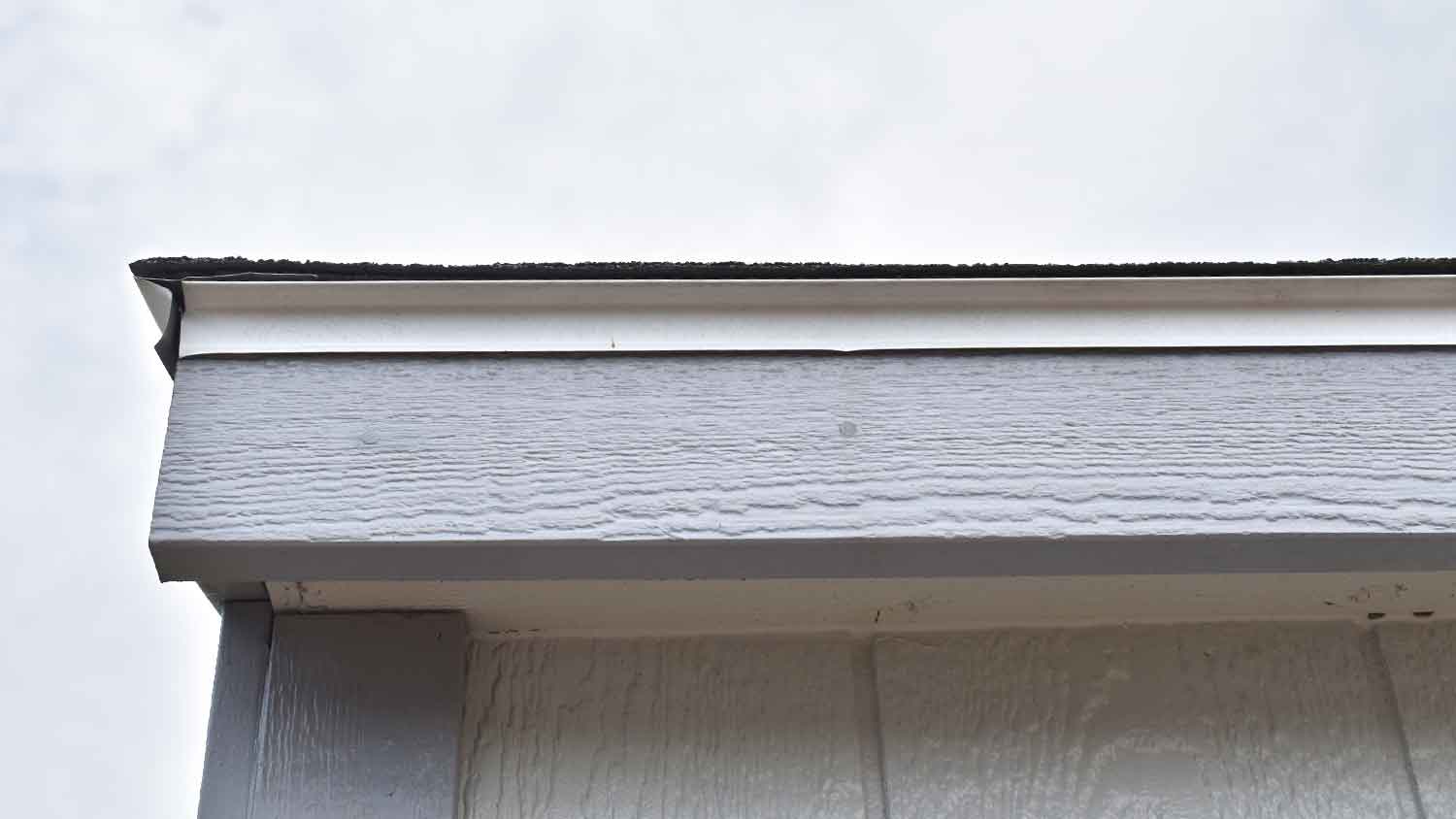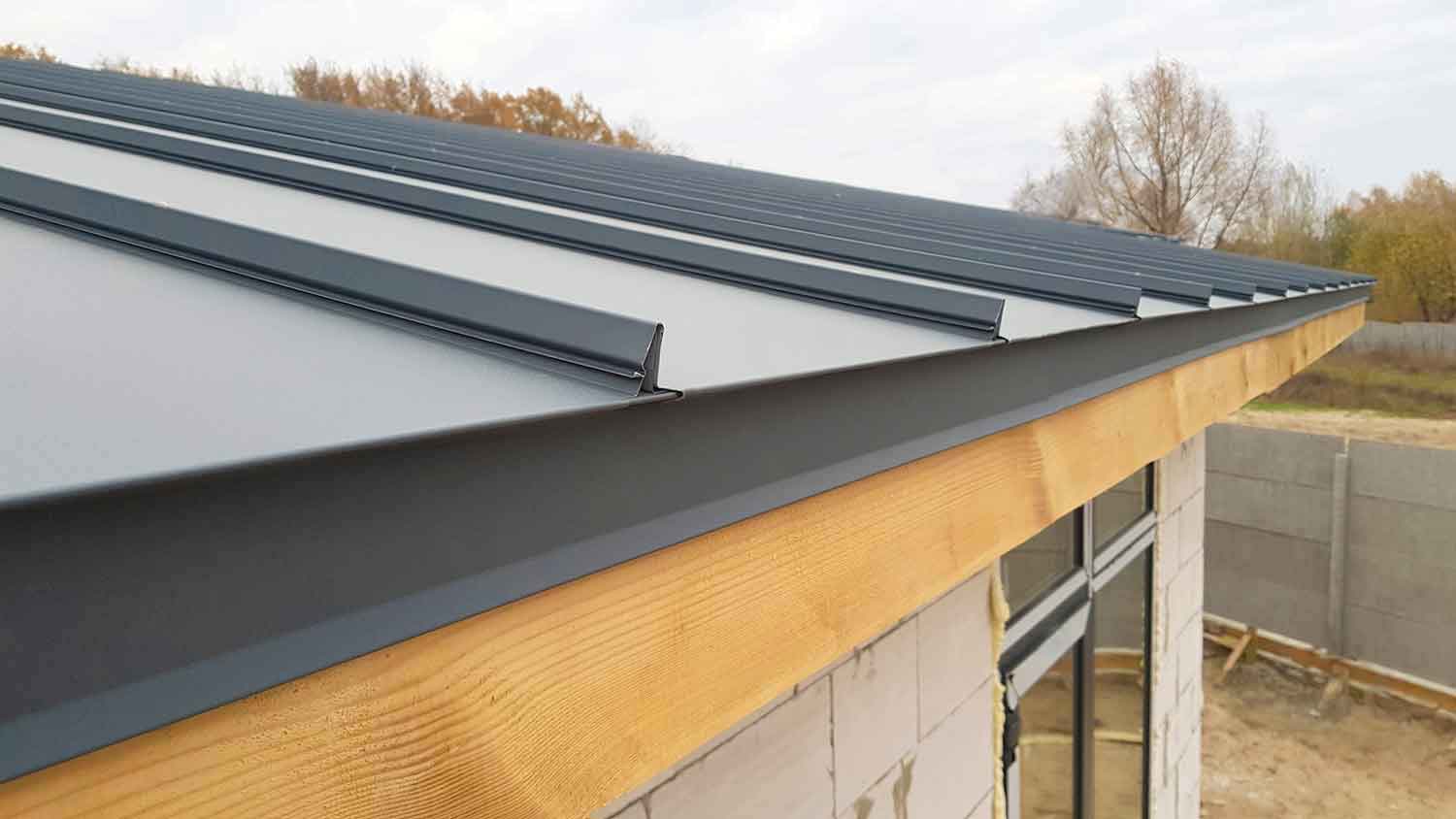
Soffit replacement costs depend on multiple factors, like length, accessibility, and material. Learn about the cost factors to budget more accurately.
Keep rain from drip dropping into your home with the proper edge


There are three main roof drip edge types, each with a unique use case. Type C drip edge is most common on eaves without gutters, Type D is most common where there is no roof overhang, and Type F, also called gutter aprons, are designed to drop water directly into gutters. The right type of roof drip edge for you will depend on your roof design and material, as well as the climate in your area.
Roof drip edges are pieces of angled metal at the roof's edge extending over the fascia boards. They direct water running off the roof away from your home for safe disposal. In most areas, roof drip edges are required in the housing code for new builds, but they might not be present in all homes.
Roof drip edges can complement gutter systems or exist without them. In both cases, the drip edges help drain water away from the roof, preventing damage to the soffit and fascia.
| Type of Drip Edge | Cost per 10 Linear Feet |
|---|---|
| Type C (L-shape) | $3–$10 |
| Type D (T-shape) | $10–$15 |
| Type F (gutter apron) | $3–$10 |


| Pros | Cons |
|---|---|
| Affordable | Hard to install over an existing roof |
| Good fit for flat or metal roofs | Less effective for steep roofs |
Type C drip edges are sometimes called Type L because of their shape. They are the simplest type of drip edge. They’re metal bent at a right angle, with a small flare on the bottom edge. Though simple in design, Type C drip edges will keep water away from the fascia and soffits with their curved edge.
Type C drip edges are simple in design and the most affordable, costing between $3 and $10 per 10 linear feet on average.
Best for: Roofs with a low slope and metal roofs.

| Pros | Cons |
|---|---|
| Works with most roofs | Expensive |
| Keeps water further from the fascia | Hard to install over an existing roof |
Type D drip edges are also known as Type T edges because their profile resembles a “T” shape. Because of their “T” shape style, Type D drip edges extend further away from the roof than a Type C edge. They’re most common on roof slopes that end at the exterior wall of the building, where directing water further from the roof is necessary for safe disposal.
Because of their more complicated structure, Type D edges have a higher price tag. On average, they cost between $10 and $15 per 10 linear feet.
Best for: Roof edges that end at the exterior wall with no overhang.

| Pros | Cons |
|---|---|
| Directs water into gutters | Not ideal for steep roofs |
| Less visible than C-type | Requires gutters |
Type F drip edges resemble Type C drip edges, but they extend further down your fascia boards to lead water directly into your gutters. As such, they’re only an option if you have a gutter system installed.
Its extended shape is also good for areas that experience high winds or lots of rain, as it provides added protection to the roof structure and keeps water from seeping behind the gutter.
Type F drip edges cost between $3 and $10 per 10 linear feet, on average.
Best for: Homes that also have gutter systems installed.
| Material | Cost Per 10 Linear Feet |
|---|---|
| Aluminum | $3–$10 |
| Galvanized Steel | $5–$12 |
| Copper | $35–$75 |
Drip edges are available in a few different materials, including aluminum, steel, and copper. Steel and copper are the most durable, but aluminum is the most affordable.
Pros
Lightweight
Inexpensive
Available in multiple colors
Corrosion resistant
Cons
Not as strong as other metals
Less resistant to strong winds
Pros
Strong
Resistant to high winds
Rust resistant
Ideal for high-moisture climates
Cons
More expensive
Heavier than aluminum
Pros
Durable
Beautiful aesthetic
Corrosion resistant
Naturally avoids mold and algae growth
Cons
Very expensive
It’s possible to install the materials yourself, and doing so lets you avoid the cost of Installing a drip edge, an average of around $575 for an average-sized roof. However, you need to install drip edges under your roofing material, so in most cases, replacing them involves replacing at least a portion of your roof. We recommend having a professional carry out any roof work, including drip edge installation, to avoid leaks and other issues.
Additionally, roof work of any type can be dangerous, so hiring a local roofing company to get the job done can help keep you and your home safe.
From average costs to expert advice, get all the answers you need to get your job done.

Soffit replacement costs depend on multiple factors, like length, accessibility, and material. Learn about the cost factors to budget more accurately.

Asphalt shingle roofs are the most common roof type in the U.S. Learn about average shingle roof costs and the factors that can affect your total.

Need to add to your shed’s life span and protect your belongings inside? Use this shed roof replacement cost guide to see what your project will total.

Follow these four straightforward steps to install hurricane ties. The number of ties and the demand load will impact the project.

Discover the cost to paint a metal roof, including average prices, key cost factors, and tips to help you budget and save on your next roofing project.

Most roofing professionals are hardworking and ethical, but there are a few bad apples to watch out for. Learn how to avoid the 12 most common roofing scams.